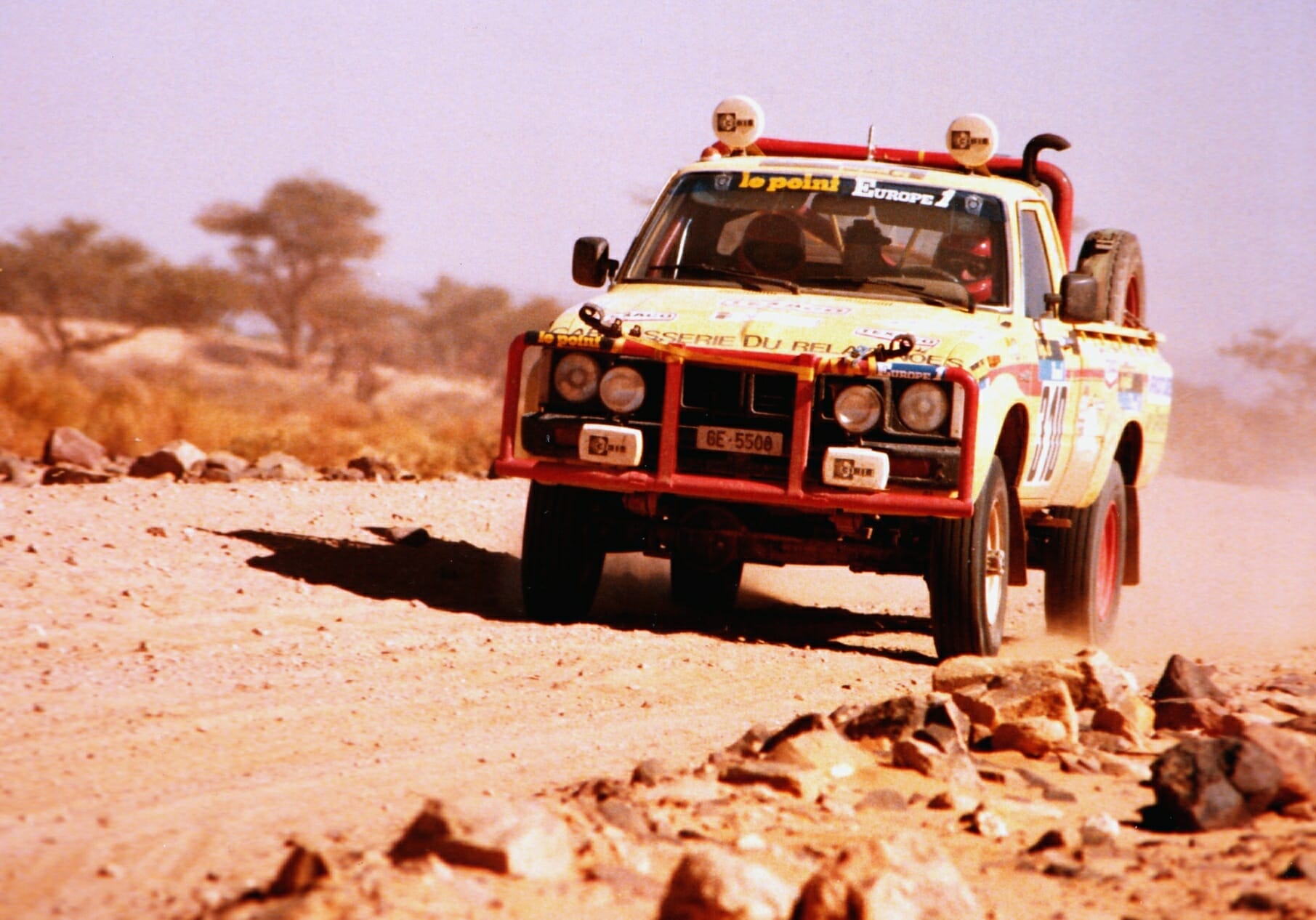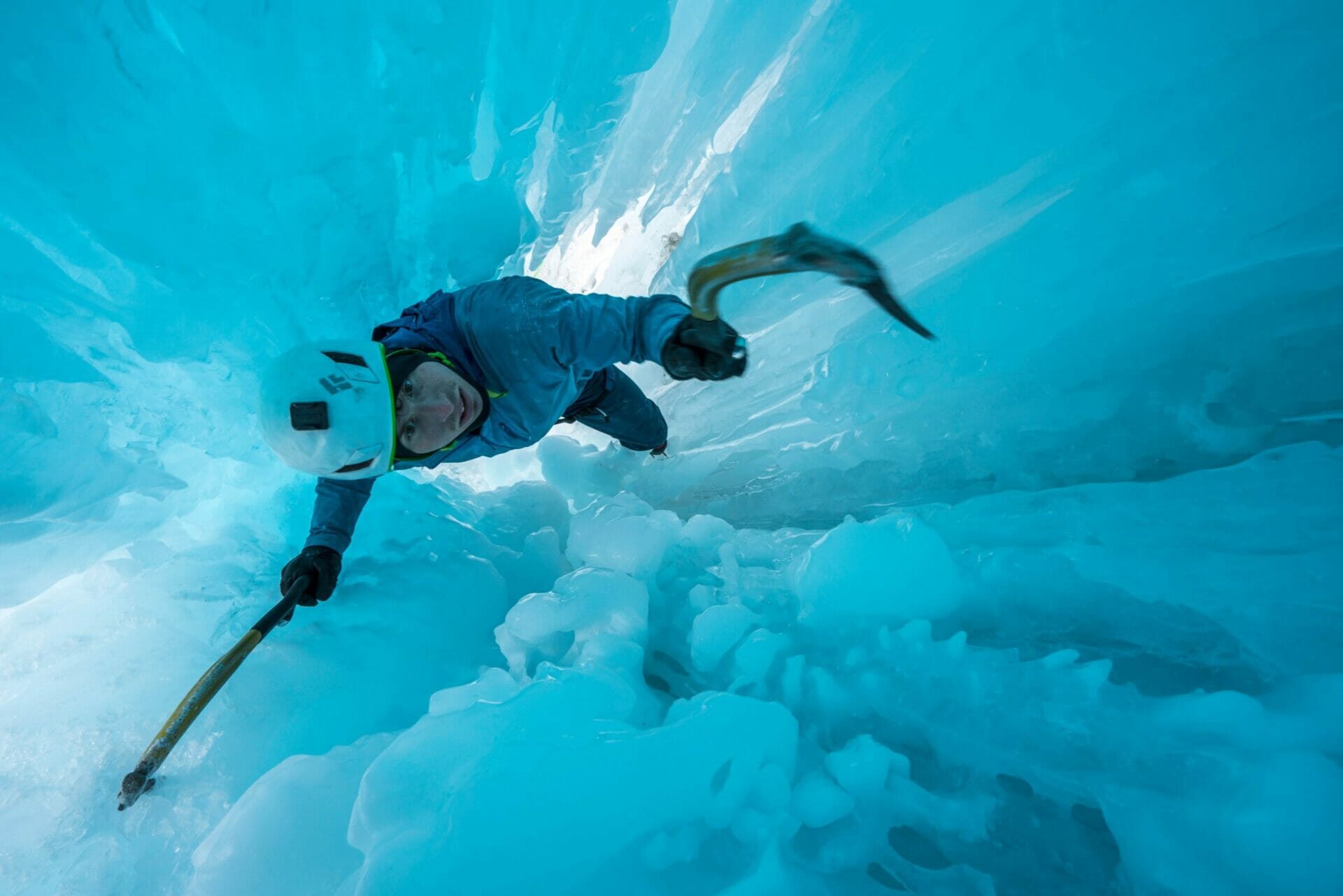
Paris-Dakar Rally | Mad Max with a happy ending
Discipline
Event
Date
Length
Winner-Podium
Other protagonists
Year
The Paris-Dakar Rally is a long-distance off-road race through the most savage desert routes of the world. It’s open to amateur and professional drivers of any off-road vehicles: trucks, quads, motorbikes, cars, who want to test their limits. The original ride, from 1979 to 1991, started from Paris to Senegal’s capital, Dakar. Only 74 vehicles out of 182 survived the 10,000-kilometre trip. Due to security threats along the road, the contest has now moved to South America and then Saudi Arabia, but it has maintained the legendary name.
A wild place
Adventure is when everything goes wrong.
Yvon Chouinard, founder of Patagonia
Many things happen in the desert. Dune, wind, rocks. It’s the cruellest landscape on earth. You stop in the middle and then you hear it. Nothing.
When Thierry Sabine got lost in the desert of Sahara for the first time, he didn’t take it as an unpleasant memory to get rid of. He took it as a revelation. The next year, 1979, Sabine organized the first edition of the Paris-Dakar Rally, a savage journey through the heart of Africa. The road taken to cross the big continent is tougher than any conventional rally. Kilometers and kilometers of nasty dunes and sand and dry erg, under the most extreme temperatures. Each stage covers from short distances up to 800-900 kilometers.
A wild bunch of heavy machines surrounded by a massive dusty cloud, running in the middle of nowhere. An apocalyptic vision, similar to the one depicted in George Miller’s cinematic masterpiece Mad Max.
The spirit of the race
There are many odd stories about the Paris-Dakar. Both of friendship and cruelty. The spirit of the race includes them both.
Some pilots remember the kindness of the Tuaregs, after getting lost in the desert. Others tell stories about the rally support tracks, in charge of “sweeping the road” from lost pilots and repairing damaged vehicles. But also competing in their own category. “I found myself with a Frenchman ditched by his Toyota” – told Claudio Torri, an Italian driver – “ and we have seen some good ones”.
“An assistance car arrived with two broken bridges”, continued the adventurer,” and its two drivers realized that not far away, covered in sand, there was a similar car abandoned by another crew. They didn’t think about it for two minutes. They got out, disassembling the parts they needed and mounting on their car. Then they set fire to the cannibalised car and set off at great speed.”
Out there is a wild place.
The disappearance of Margaret Thatcher’s son
Sir Mark Thatcher, the adventurous son of Margaret Thatcher, the Iron Lady, was a passionate driver and decided to participate at the ’82 Paris-Dakar. As he admitted, he didn’t have any kind of preparation for the race. He survived the first week.
But after a mechanical problem, the young Briton lost contact with the main group, ending up lost at the border between Mali and Algeria. His co-pilot was a French woman, Anne-Charlotte Werney. The third person was their mechanic.
They met other drivers who took note of where they were located. But somehow, they misreported Thatcher’s location. After 3 days, as per regulation, they were officially declared missing.
A “happy” ending
For another three days British aviation in the form of the famous Royal Air Force, scoured the desert in search of Sir Mark, and the other three missing people. It was the start of the biggest search and rescue operation in Paris-Dakar’s history, also documented in the TV series The Crown.
On January 14, an Algerian pilot found them. They had enough food for days, and as they heard the plane passing, they set fire to a tyre in order to attract attention.
Luckily, they had enough supplies, and the winter temperatures were acceptable. They were brought home unharmed amid somewhat general political embarrassment.
The most dangerous race
Nowadays innovation has reached the Paris-Dakar, improving the efficiency of vehicles and the organization of the rally. But something hasn’t changed. The Paris-Dakar Rally is still one of the most dangerous races in the world, with 73 deaths from its first edition (Paulo Gonçalves was the last one in 2020). There’s a saying among pilots who took part in the brutal ride. “To finish first, you first must finish the race.”
Tag
Buy a ☕ for Hypercritic









